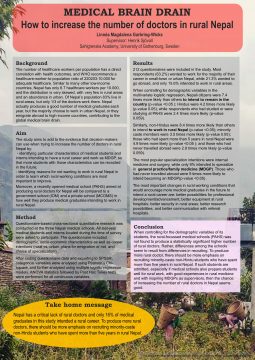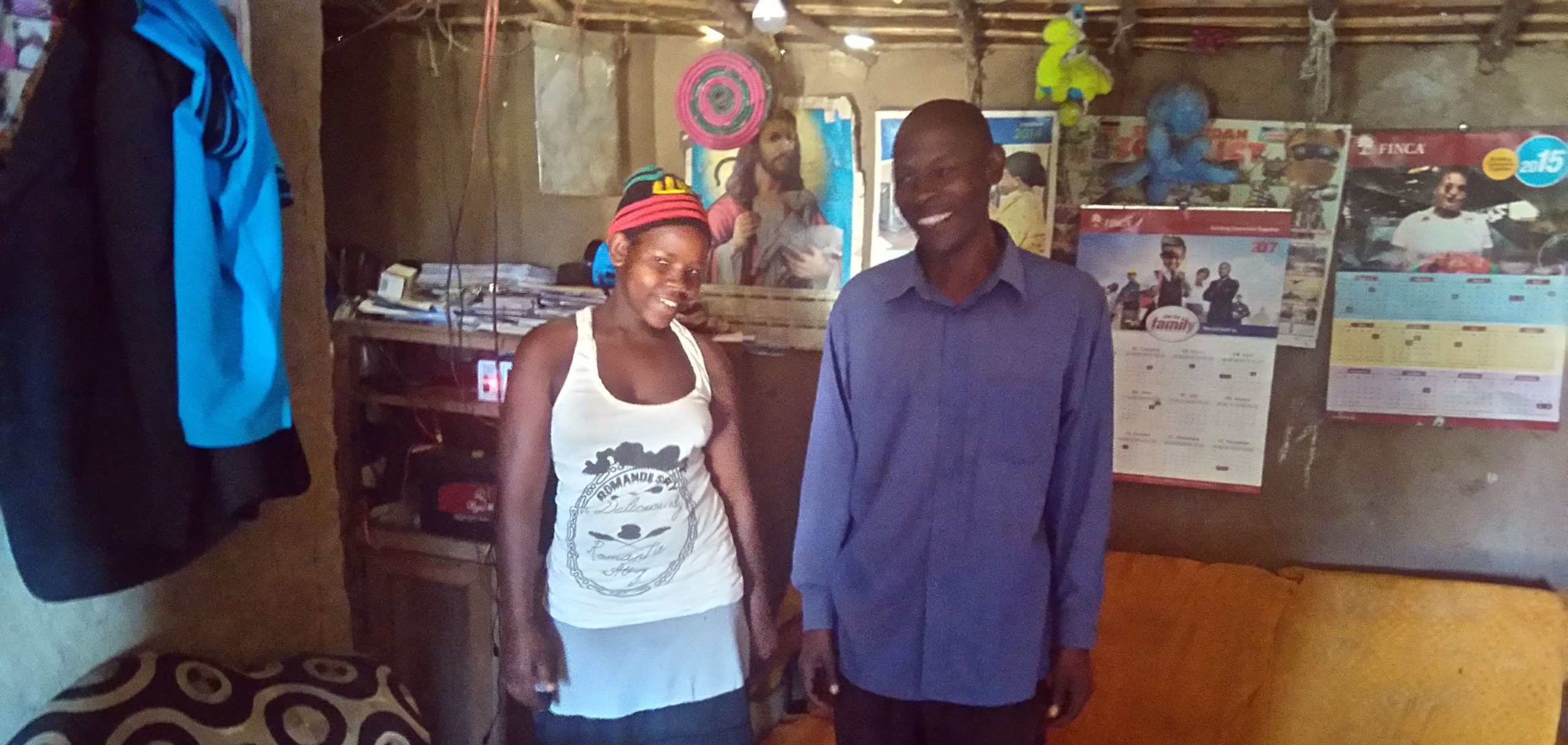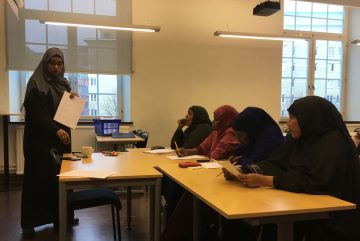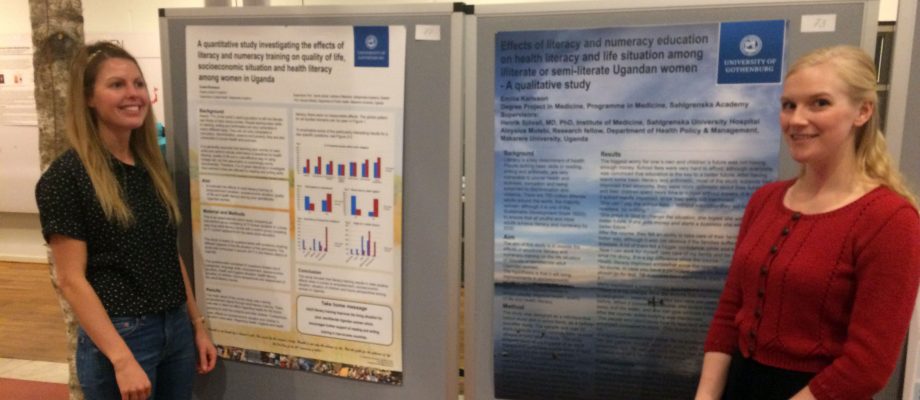COLUMN. In his latest column, Henrik Sjövall argues that more master’s theses should be published in GUPEA.
As you will no doubt be aware, universities have three tasks: teaching, research, and outreach work – what we usually call ‘the third task.’ I have always been particularly interested in the latter. For example, I have been involved in a radio program (Alltinget) in which we answered listeners’ questions. I have also written columns a couple of times a year here in the Sahlgrenska Academy’s online magazine Akademiliv, allowing me to share my highly varied life in the fascinating borderland between healthcare and academia.
I enjoy supervising master’s degree theses for medical students, ideally on topics that are slightly outside the usual scope of established research teams. Today, medical students primarily learn quantitative scientific methodology, which is based on the hypothesis that there is some kind of ‘typical patient’ and which attempts to do away with variation using various statistical methods. However, a long teaching career has taught me that many important issues are considerably more complex than this. There is often no ‘typical patient’ to look for – it is precisely the variation (the variation that can be spirited away with statistics) that is so interesting! This is why I now prefer projects in which a qualitative approach is used, with interviews using open questions followed by systematic text condensation. You look for variation, rather than ‘spiriting it away’!
I enjoy supervising master’s degree theses for medical students
And now to the point: We have previously had a policy of publishing theses that meet the standard for a pass in the university library’s GUPEA portal, where they become citable and searchable. Are we the only ones to do this? No, but the number of published theses varies enormously between departments and faculties. In a recent search, I found 4,423 master’s theses on GUPEA. Forty percent of these were from the Faculty of Social Sciences, with the other faculties accounting for around 10 percent each. The Sahlgrenska Academy accounted for 444 master’s theses.
However, the course management for the degree project – with the almost unanimous backing of supervisors – has now decided to stop using GUPEA as a portal. It is unclear what will happen instead. Eventually, we will build up a separate portal. I believe this is extremely unfortunate, and I therefore want to use my little column to call for increased – not reduced – publication of master’s theses in GUPEA. I have done some searching in GUPEA, and I believe that the University Library search function in the database should be improved. I have sometimes had difficulties finding even my own works that I know should be there.
The system usually works
Which are these slightly unusual master’s theses that are unsuitable for publication in peer-reviewed scientific journals? I will try to briefly explain how the system of selecting and examining master’s theses works for the medical program. We call this project work (one semester of full-time study at second-cycle level), because virtually no student chooses to do a master’s degree. Subjects are chosen by supervisors posting proposals for suitable projects on a project portal, with students then selecting projects that they are interested in by contacting the intended supervisor. If the outcome of the contact is positive, a ‘letter of intent’ is written and is signed by the student and the supervisor. The relevance of the topic is almost never reviewed by the course management; the focus of the review is on implementability.
The system usually works. Most students find a suitable supervisor, either through personal contact during the course program or via the project portal. Some students tend to need help finding projects. Every semester, a few dozen students carry out their project work abroad, usually in low-income countries. This requires grant funding for additional travel and accommodation costs, generating more work with applications. There must also be a reliable foreign supervisor in place who receives an operating grant for their unit to carry out the supervision assignment.
Master’s theses should not be regarded merely as ‘teaching material’
Project examination involves three components: (1) an oral presentation of the results with review by a student opponent and an examiner with associate professor competence; (2) a presentation and defense of posters at a joint poster session; and (3) a review of the thesis itself using checklists to assess the research question, the method, the presentation of results, and the stringency in terms of conclusions. The latter process not infrequently generates a need for significant reviews, and as a general rule the end-result tends to meet the requirements well.
I will now try to illustrate my view that master’s theses should not be regarded merely as ‘teaching material’ by giving a few slightly unusual thesis topics that I myself have been or am the main supervisor for. As you will see, they make for highly varied reading.
Let us begin here at home. A student attempted to investigate which situations generate ethical stress among healthcare staff at Sahlgrenska University Hospital. Main finding: Breakpoint discussions were not carried out, and staff were forced to continue with care that was perceived to be pointless. The doctors were simply not doing their job!

Over the years, the Sahlgrenska Academy has had extensive contact with Nepal, and I have had a number of projects there. A student traveled to Nepal to study the mechanisms behind the ‘brain drain’ in rural healthcare, i.e. why trained doctors keep moving to large towns or emigrating. Main finding: It was not primarily about money. The problem was that other family members, including children, were not deemed to be able to live a meaningful existence if the spouse was working all the time – as is the case in small mountain hospitals. The lack of opportunities for attending school was also a major concern.
Let us continue in Nepal. Two students studied the use of female community health volunteers (FCHVs) in Nepalese villages. FCHVs are the final outpost of healthcare, and are essentially villagers who receive (very brief) medical training and then help with general health advice, especially regarding maternity care and child nutrition. Main finding: The system works well, and is very much appreciated.
Nepal again: Three students mapped management systems, staffing structures, and medical results at a small mountain hospital in the Gurkha district of Nepal. Main finding: They do many of the things that are done at specialized units in Sweden. Given the circumstances, the quality is good – but there is a major problem. Being constantly on call around the clock wears down the doctors in charge. They simply cannot cope! Thankfully, this system no longer applies in Sweden.

To the right:In blue jacket the hospital director Baburam Giri, to his right in the picture Henrik Sjövall’s friend and mentor Arjun Karki. On the far right, the three students Pontus Svenning, Oliver Wannehag and Fredrik Svensson who together tried to understand how the small hospital above the clouds works.
And now for a different country. Two students traveled to Lake Victoria in Uganda, where they investigated the impact on health and quality of life of teaching illiterate women who made a living collecting krill from the lake to read and count. Main finding: There was a great benefit: “Before I could read, my children were not allowed to play with the rich children. Now they play happily together!”


Let’s continue with a similar issue, only here at home. After all, there are also illiterate women from Africa in Sweden! One student therefore went on to investigate the effects of teaching illiterate Somali women to read. We asked four groups how they were doing: Women who had started the literacy course, those who had learned to read, those who were entering the Swedish education system, and those (few) who had managed to get a university education. Main finding: A remarkable rollercoaster ride of hope and despair! The worst off were those who had learned to read and count, but who were still only offered cleaning jobs. And the factors we found among those who had made it all the way through the entire education system were a pushy father (“He stuck to them like a leech!”) and English skills (“I was actually better than the teacher!”).
Continuing on home soil: Two students who were due to travel to Nepal instead investigated how patients with suspected long Covid experienced their contact with healthcare. Main finding: The results were quite shocking, with serious perceived deficiencies in terms of both doctors’ attitudes and their knowledge. A third of the patients felt that the way they were treated was almost hostile!
The same theme, but now an ongoing project: The patient’s experience of going to the doctor with what we tend to call ‘medically unexplained symptoms’. I have chosen four different large groups for which we do not actually know anything about the cause: functional gastrointestinal disorders (IBS), adult ADHD, mental fatigue, and exhaustion disorder. Main finding: The theses have not yet been approved, but preliminary data shows that dissatisfaction with the quality of patient information appears to be widespread. The soft core of healthcare is not always so soft…
Back to Nepal: This spring, three students worked in emergency admissions at Tribhuvan University Teaching Hospital (the largest university hospital in Kathmandu – their equivalent of the Sahlgrenska Academy) – studying the management of three common serious conditions: unexplained unconsciousness, suspected meningitis, and suspected blood poisoning. Main finding: The theses have not yet been approved, but preliminary data shows that management is characterized by very generous antibiotic prescribing and yet – at least in the case of blood poisoning – very significant mortality rates.
And finally, a small selection from this autumn’s menu. Three students are traveling to Tribhuvan to study how they deal with heart attacks and strokes in young women. Curiously enough, the latter seems to be extremely common in Kathmandu. Back in Sweden, one student will map the patient’s experience of consultation due to exhaustion disorder, and another student will write about how ADHD patients experience the transition from pediatric to adult care. A further student with a background in preschool education will look at the use of alternative pedagogy in primary care consultations.
This type of thesis has a value beyond ‘teaching material’
Why do I do this? Not for additional credit – I am retired, and am no longer an active researcher. I do it simply because I enjoy working with talented students (they can do an amazing amount in just a few months), and I ask questions where I am simply interested in the answer! I have a relatively wide range of methodological skills, from dealing with continuous variables with t-tests and variance analysis to interview-based studies with systematic text condensation and qualitative methods. I believe in the importance of at least some medical students gaining an insight into dealing with categorical and ordinal data (“bad-OK-good-better-best”) and at least some insight into qualitative methodology (which is taught very little in the regular program).
And I hope to impart the following lesson: The more important something is, the harder it tends to be to measure! This is what Jonna Bornemark calls The Renaissance of the Unmeasurable.
I am firmly of the opinion that this type of thesis has a value beyond ‘teaching material,’ and should be made citable and searchable in some way! As you can see from this varied list, important questions can be tackled at master’s level for which there is sometimes no unambiguous answer and which therefore do not always qualify for inclusion in peer-reviewed international literature. Given the short amount of time available, it is hard to know whether the answer is really no or whether the study is simply too small. But this certainly does not make the work worthless!
So please, keep publishing your master’s theses in GUPEA, if only to show students the respect they so thoroughly deserve. Because, in all their fragility, these are small scientific studies – and certainly not just ‘teaching material’!












